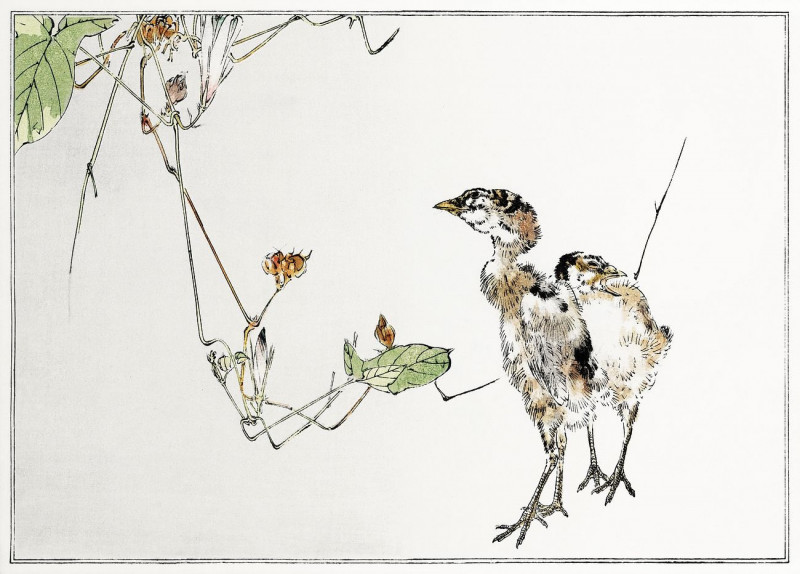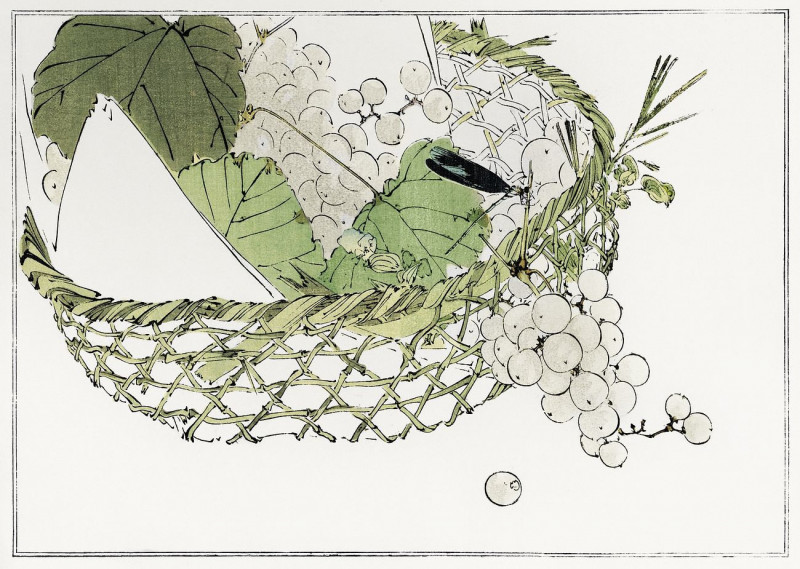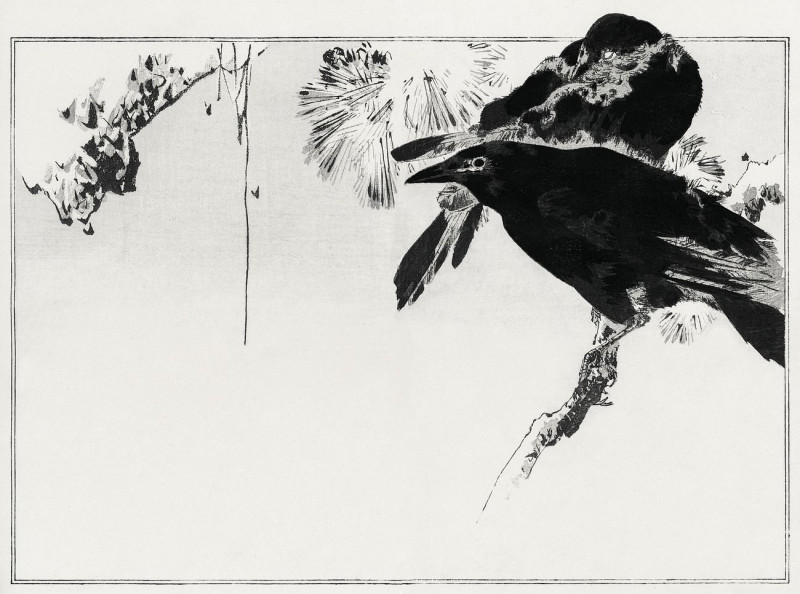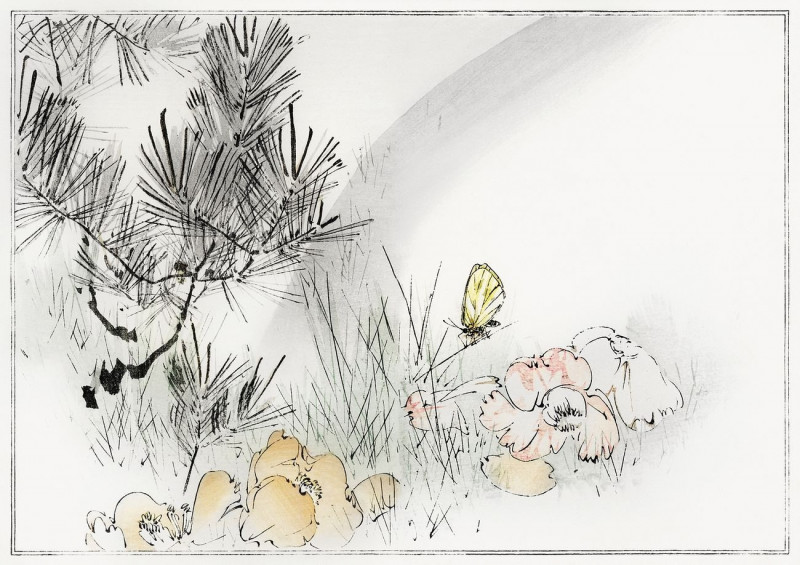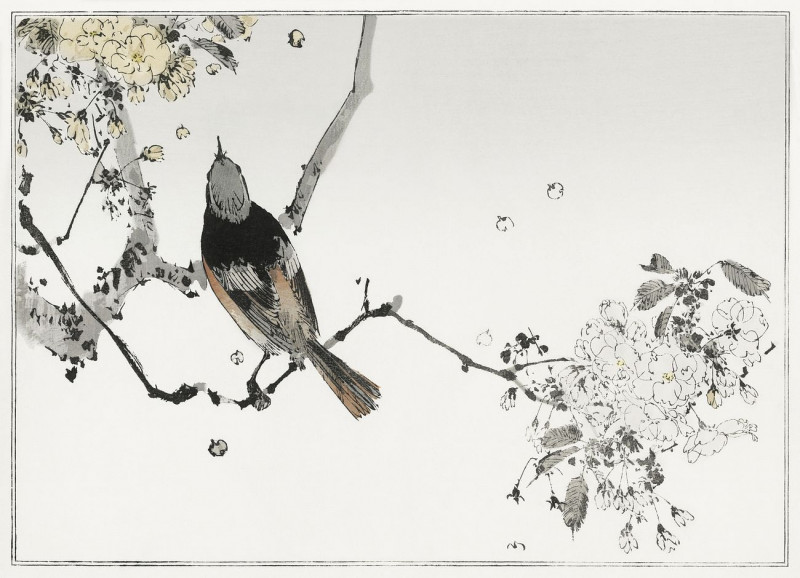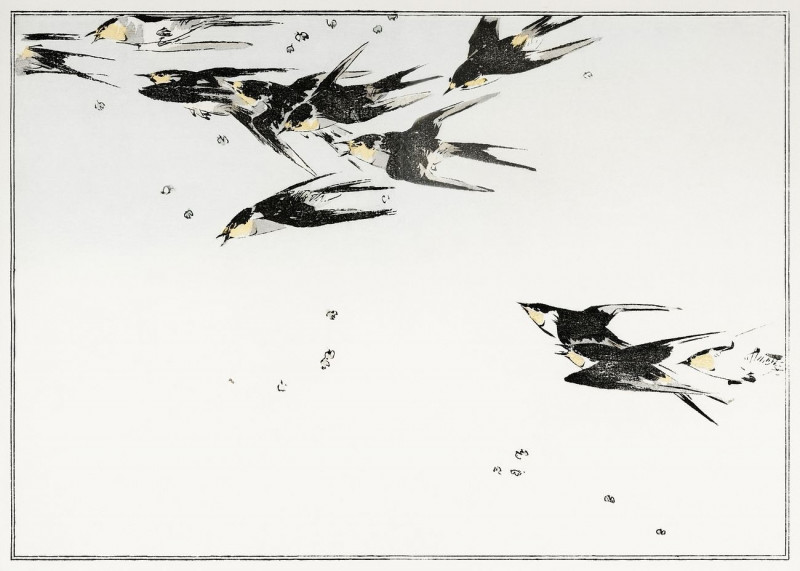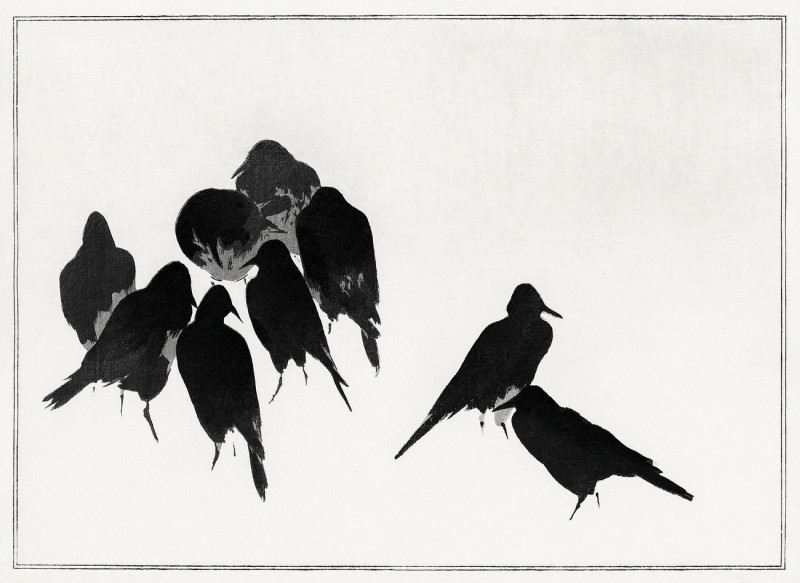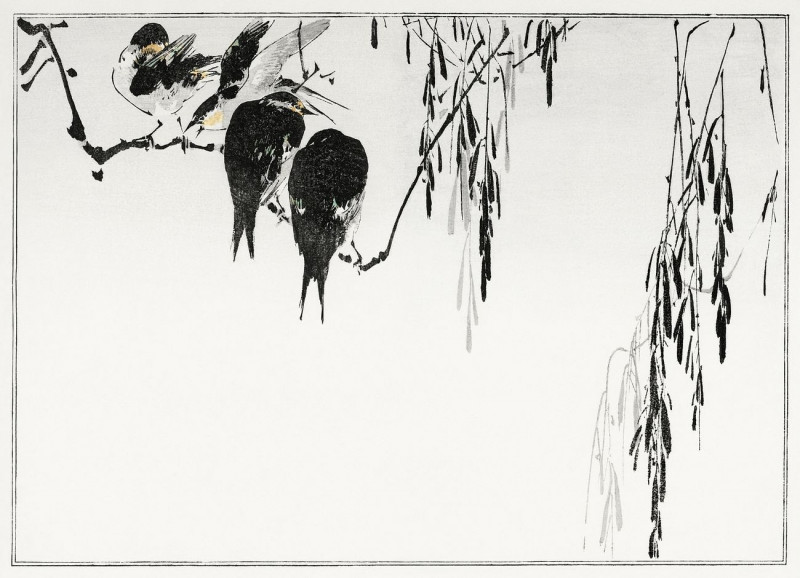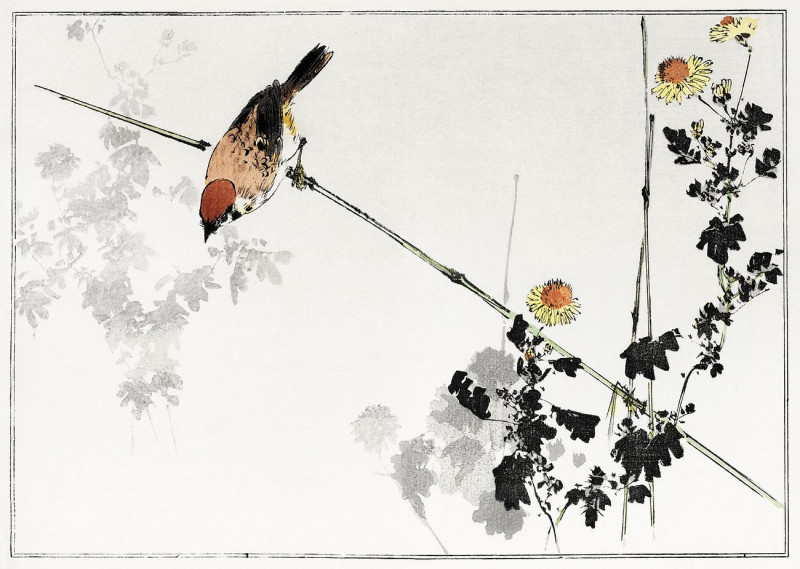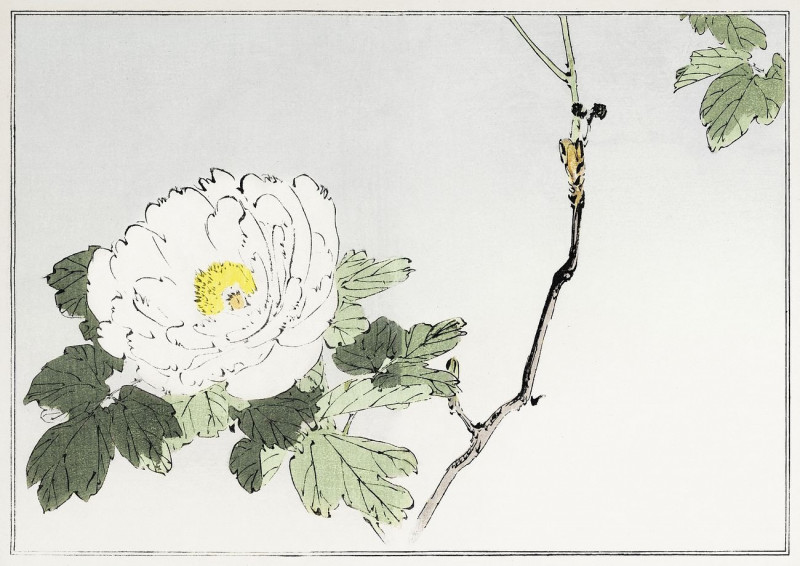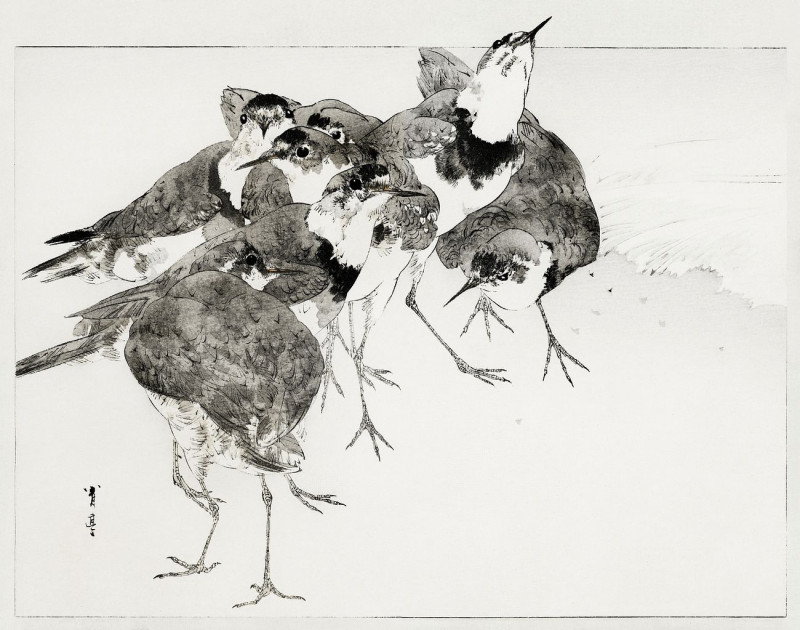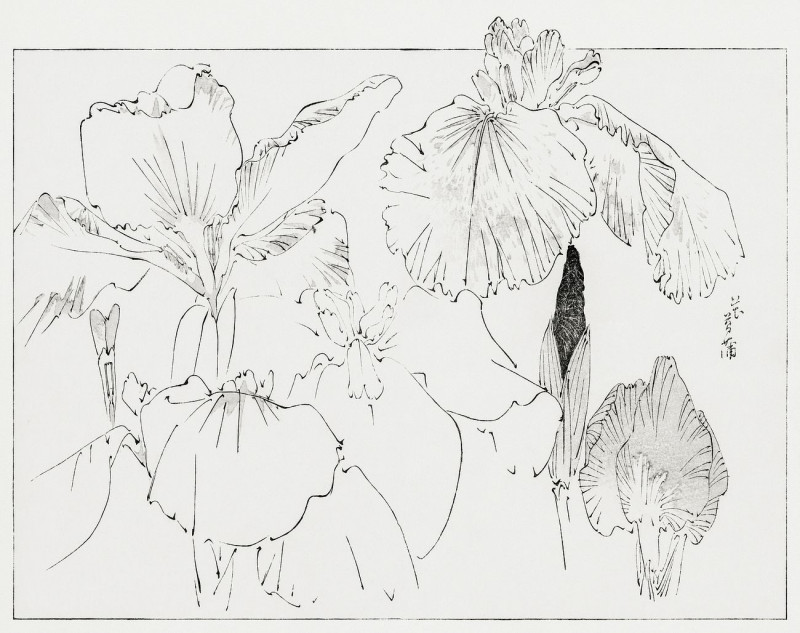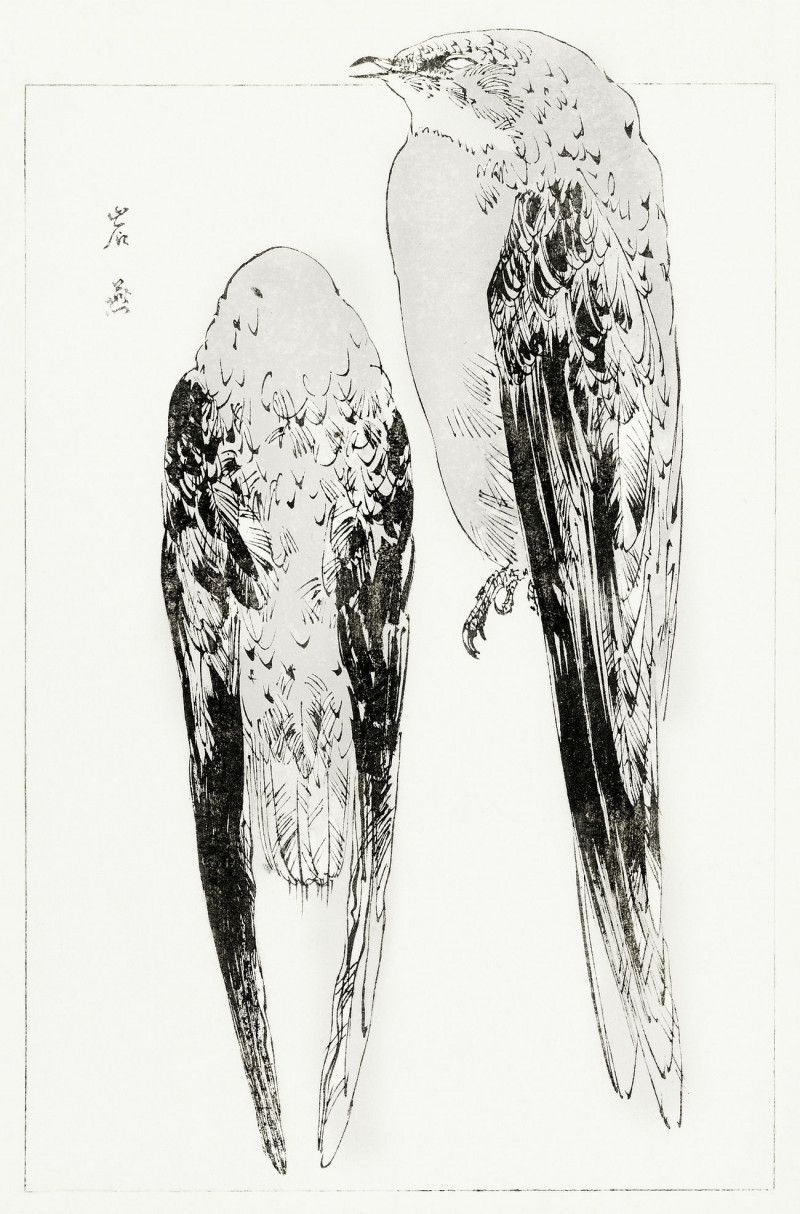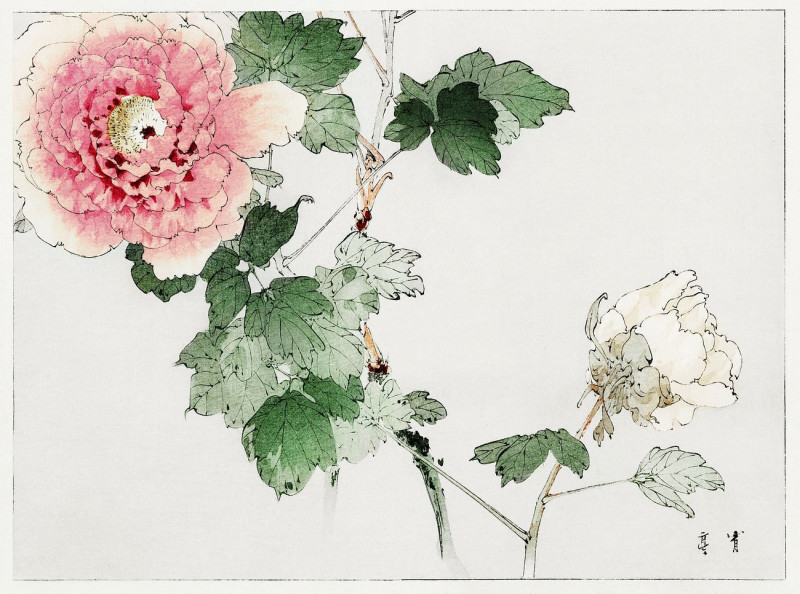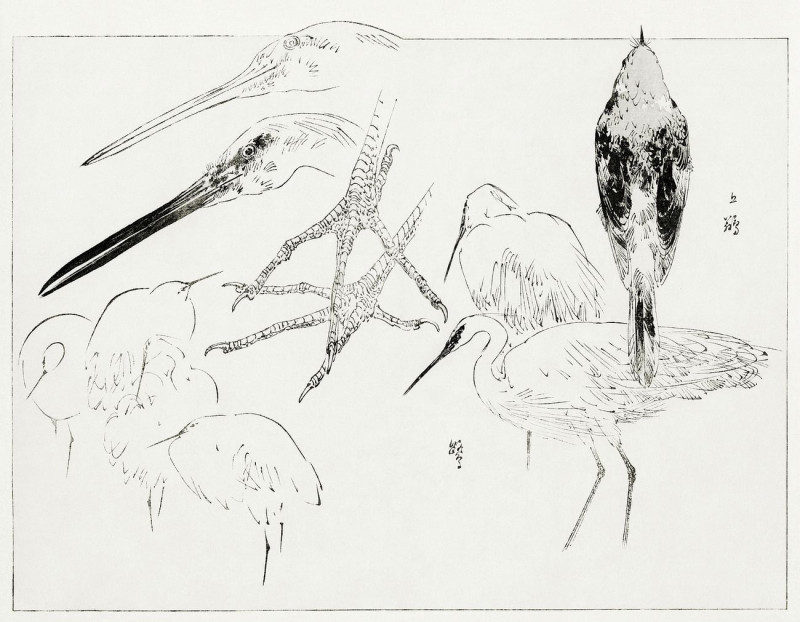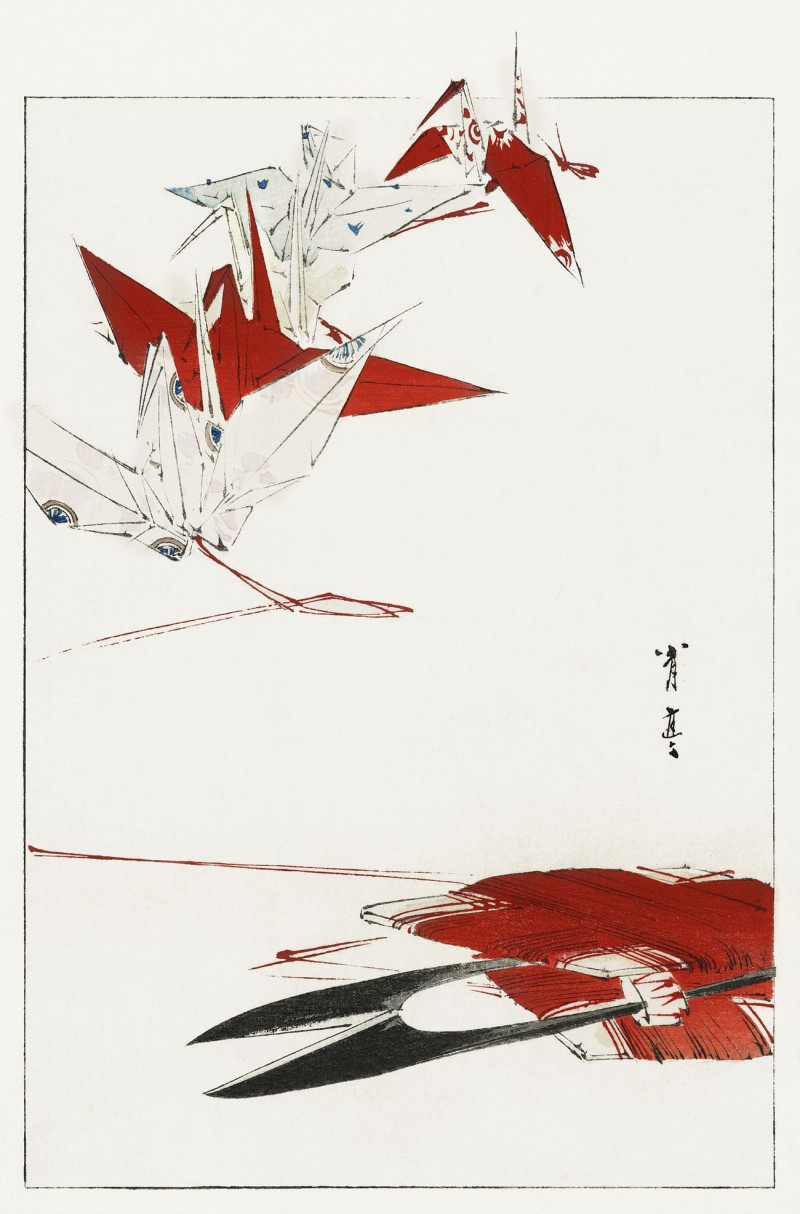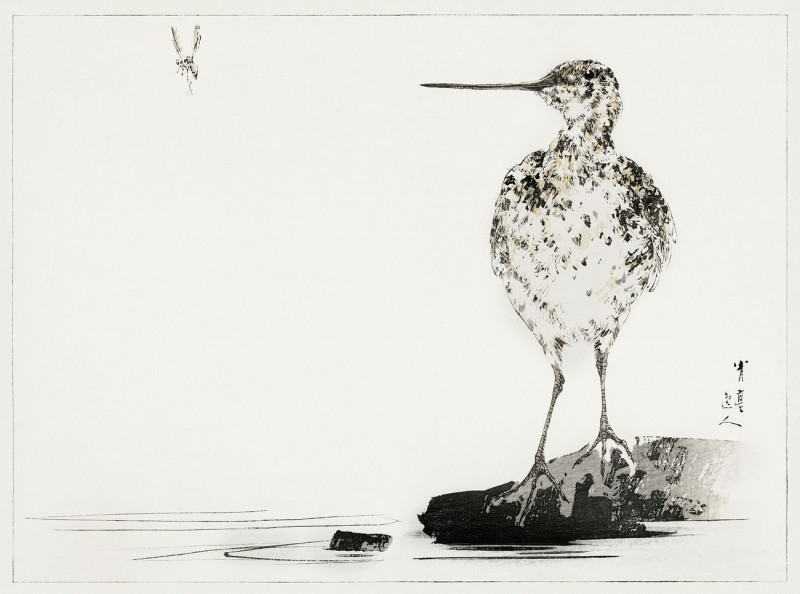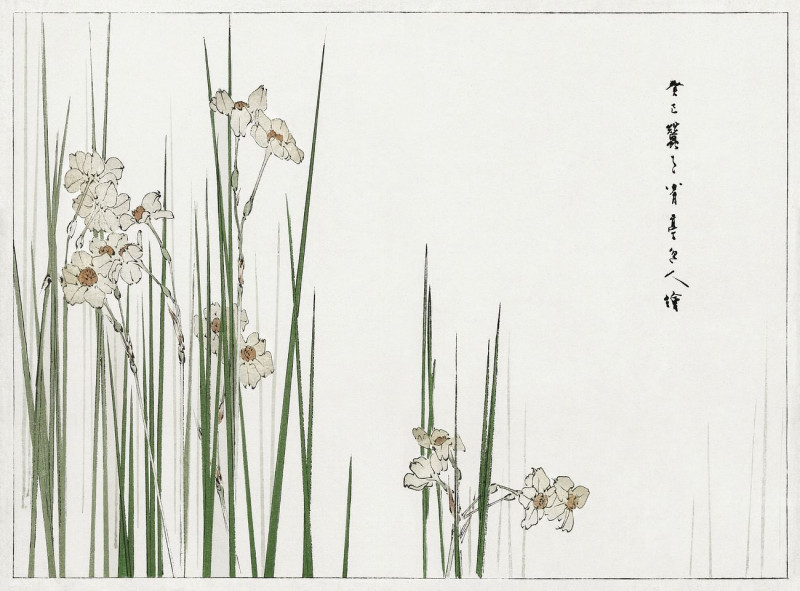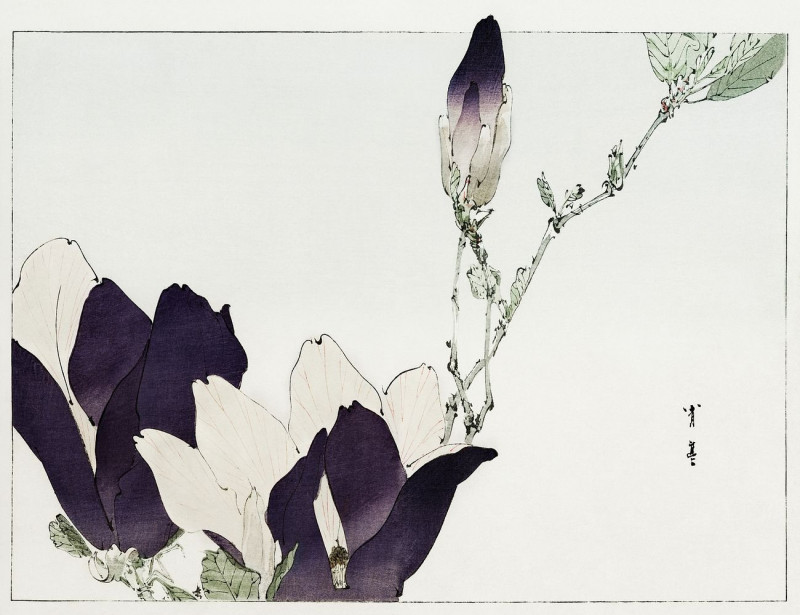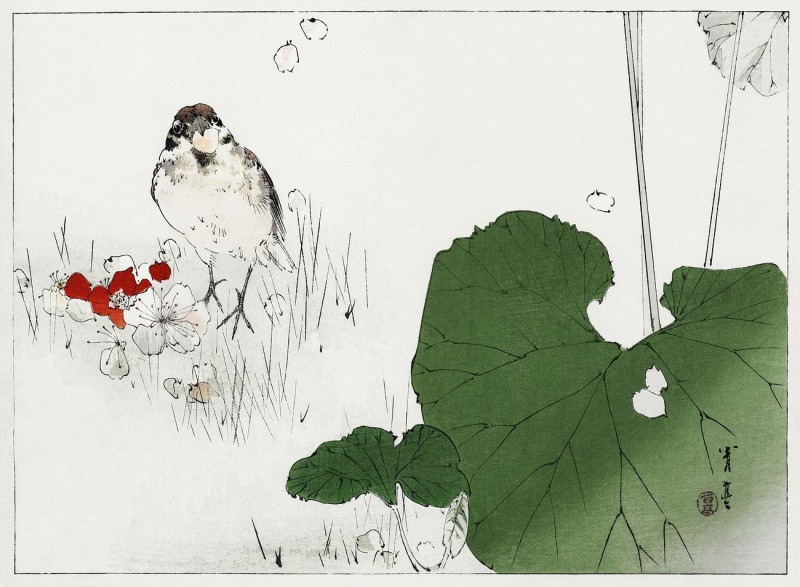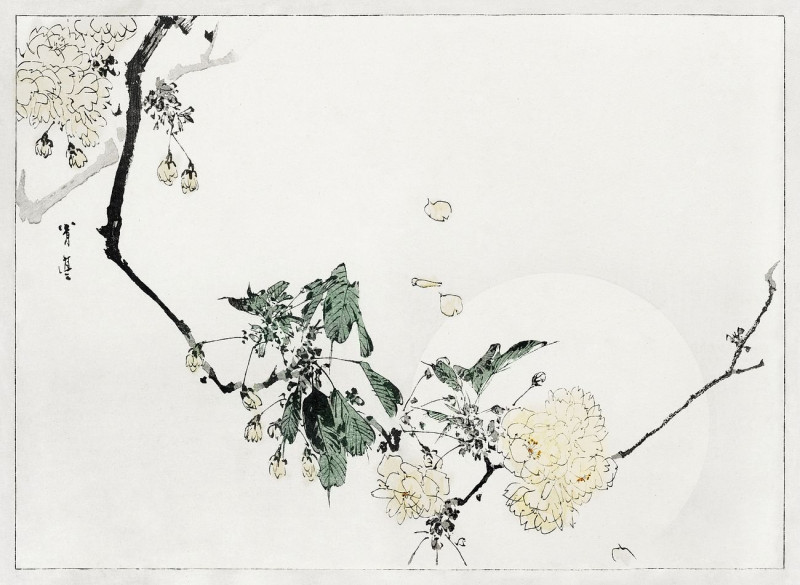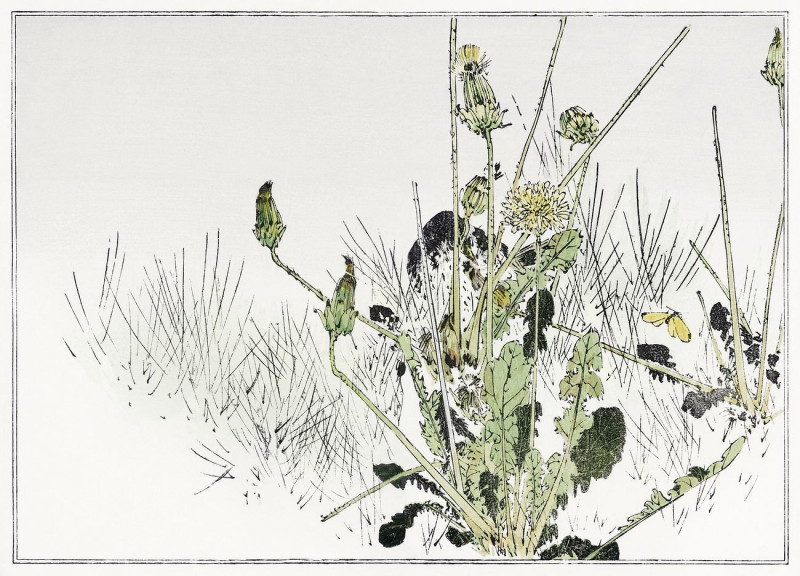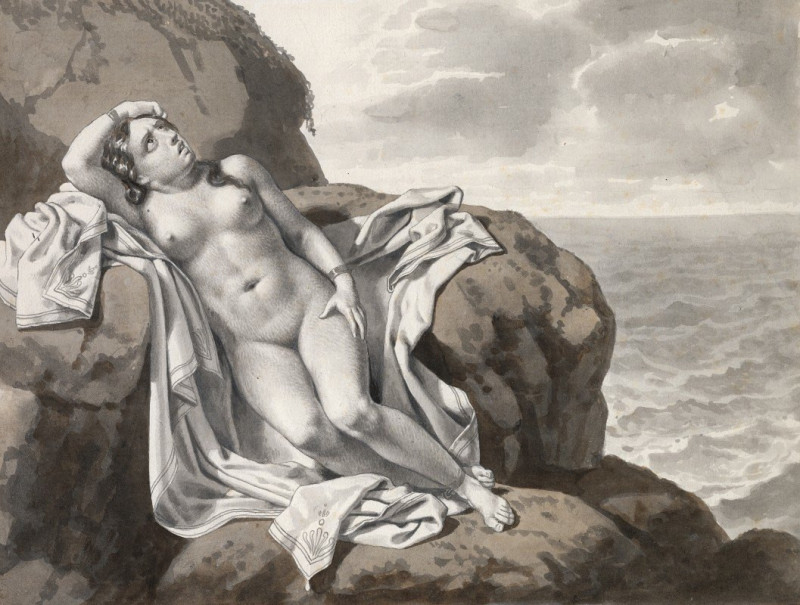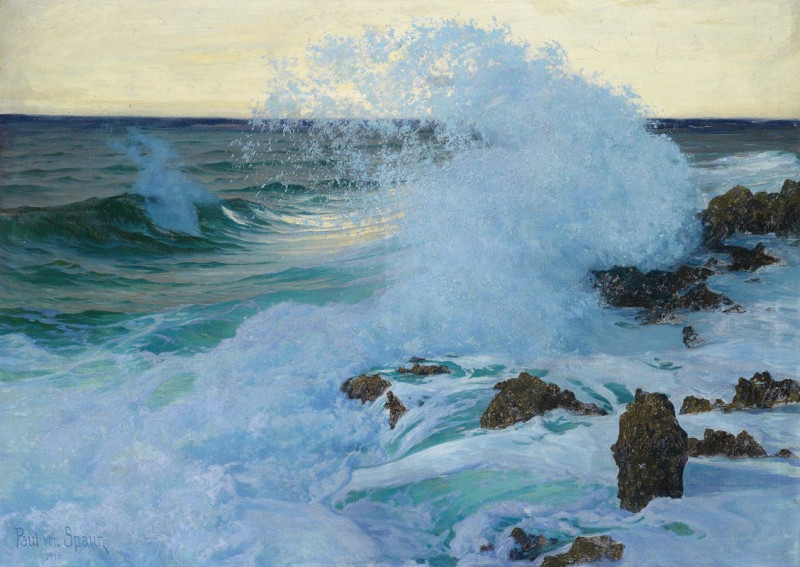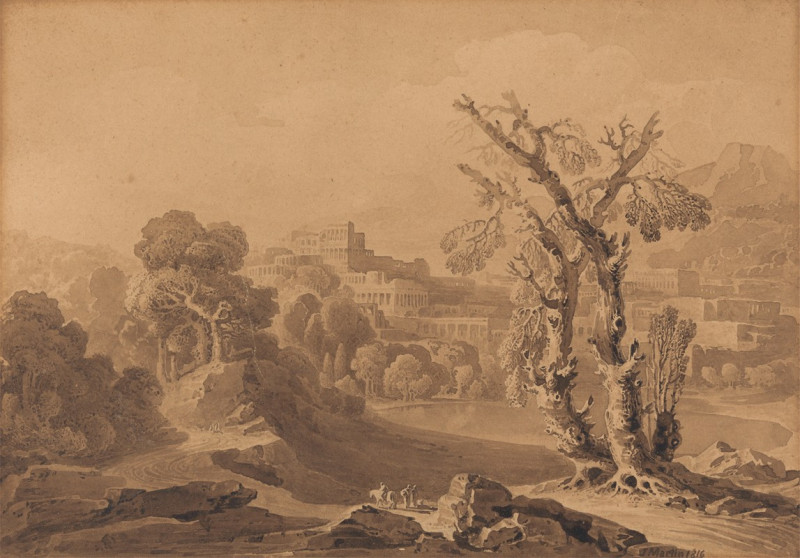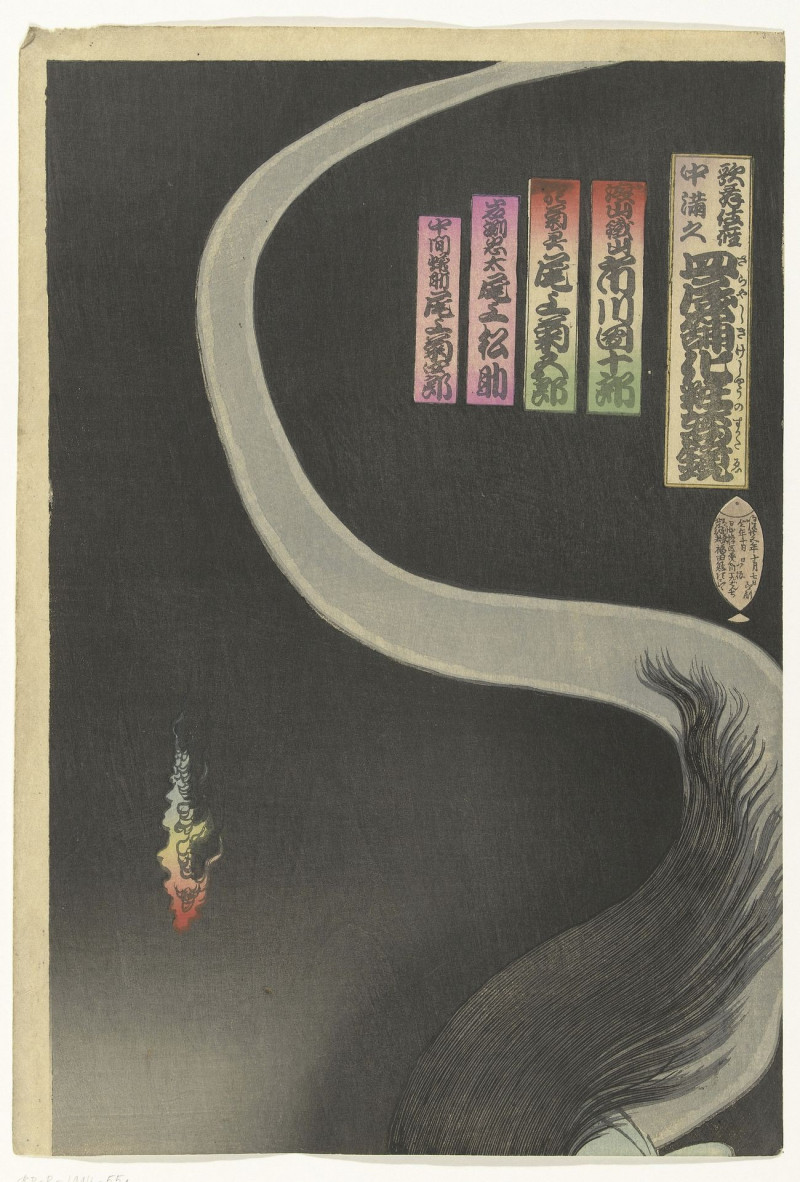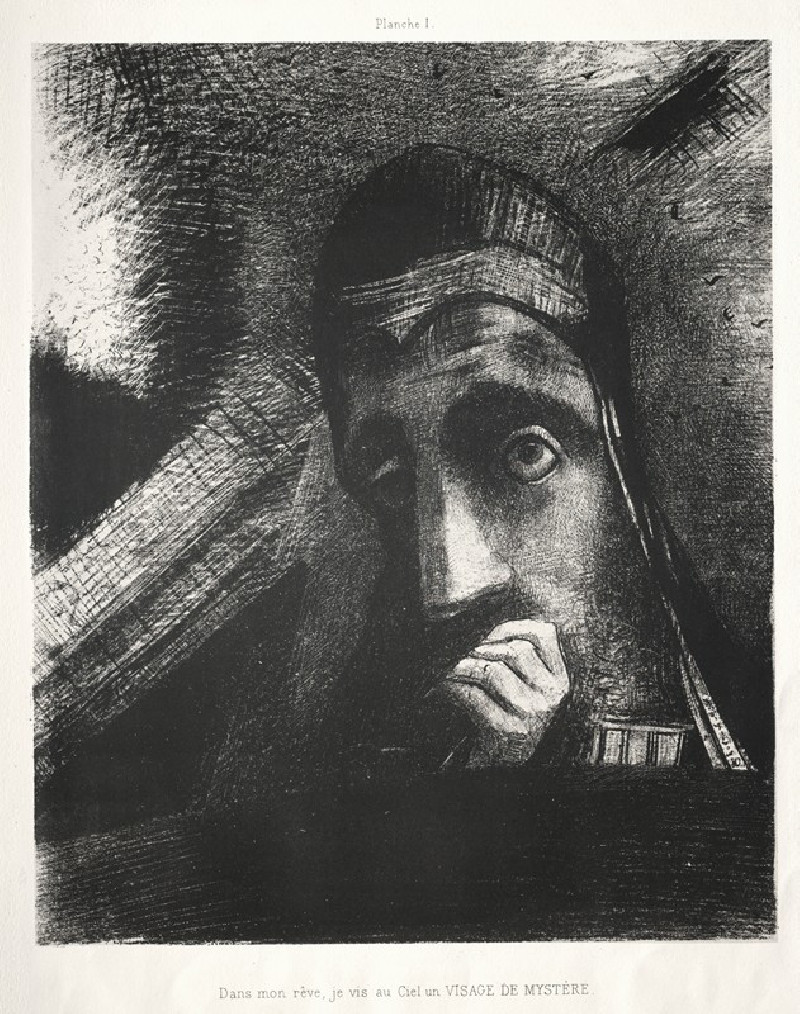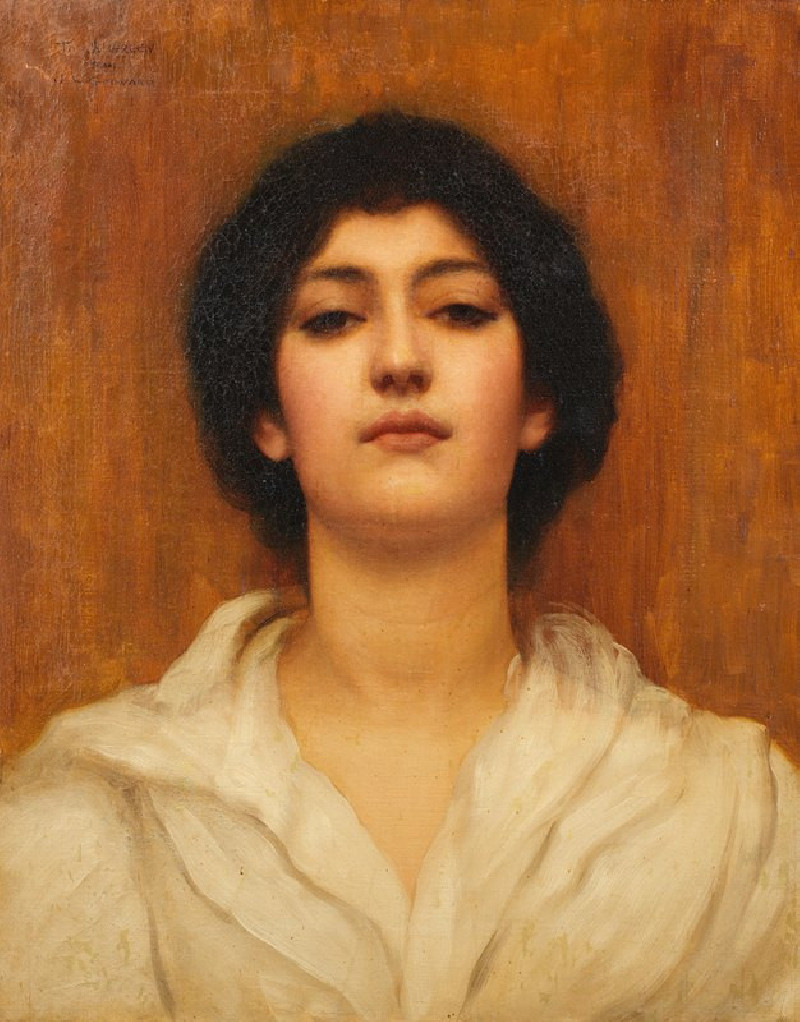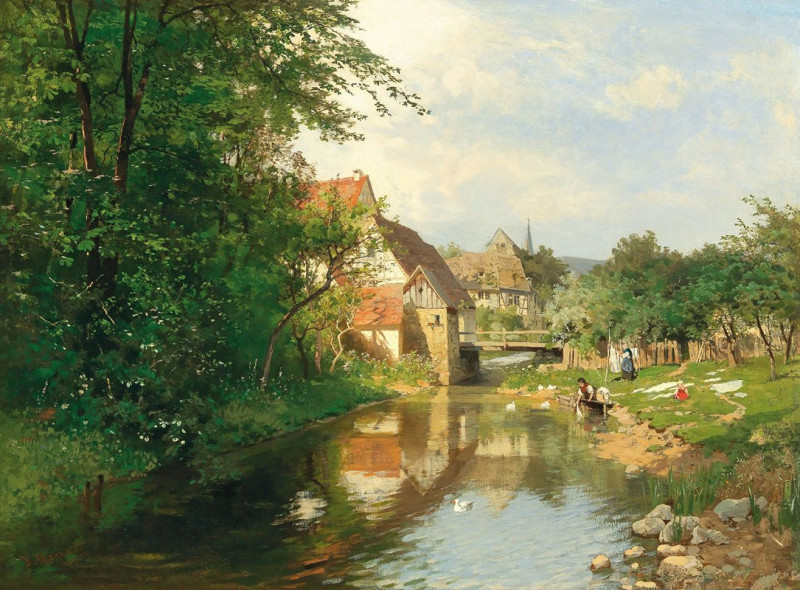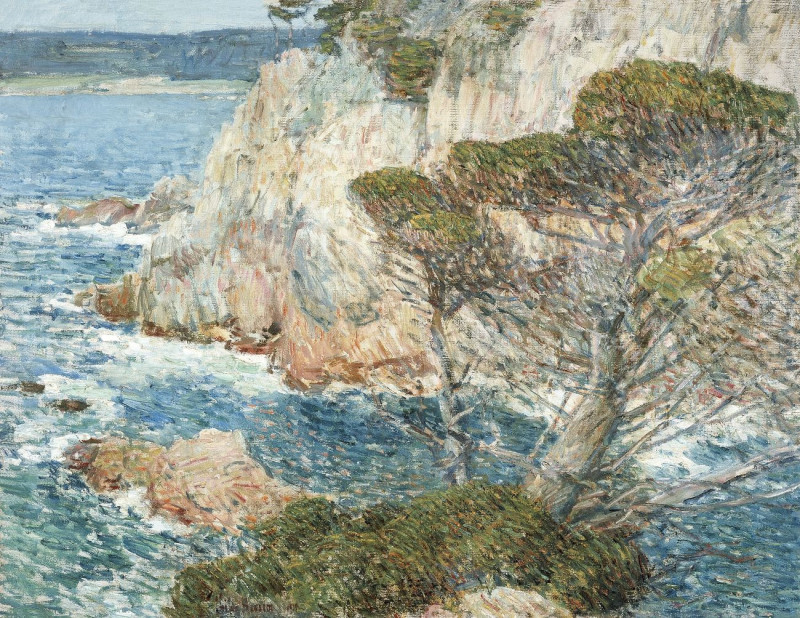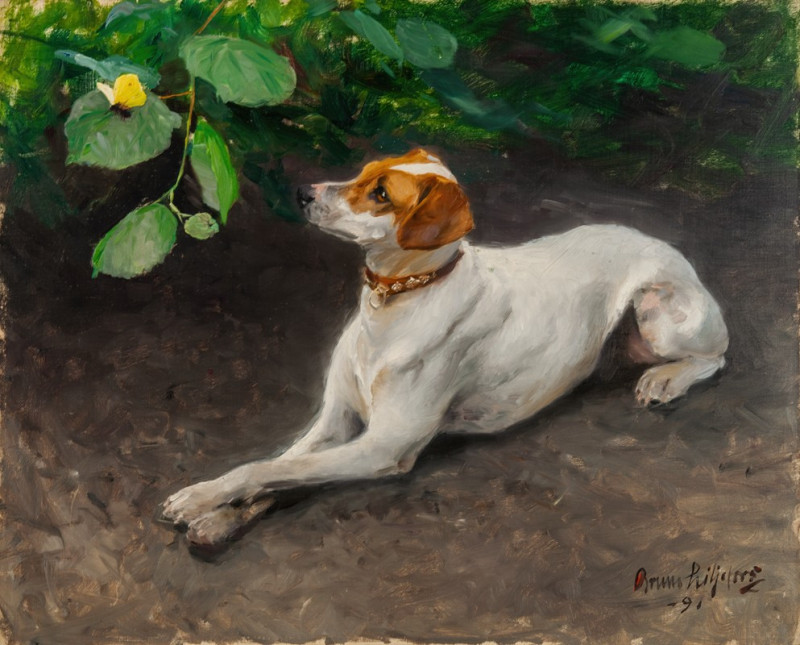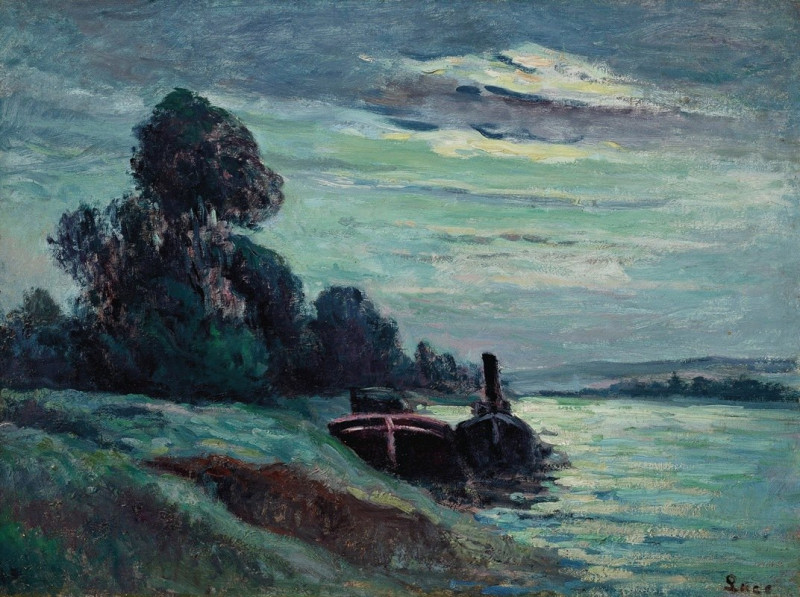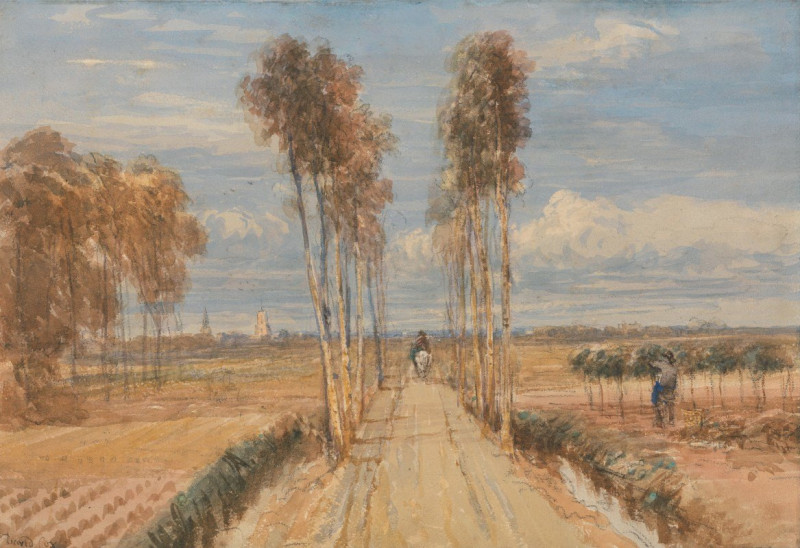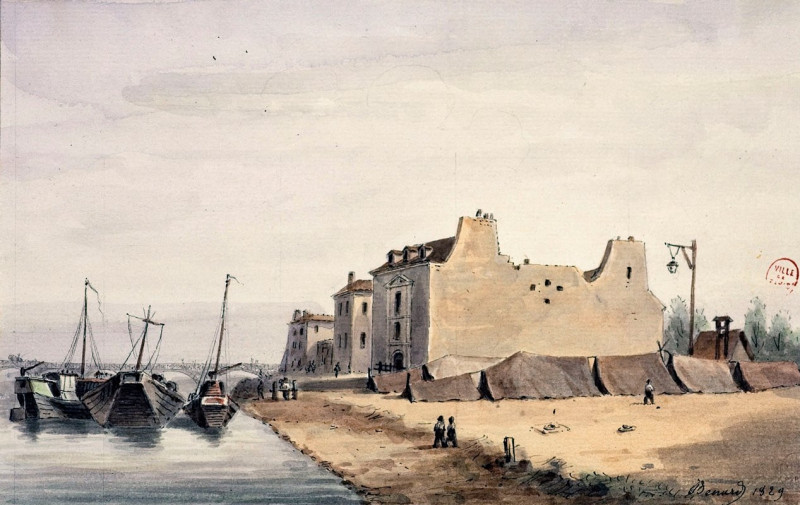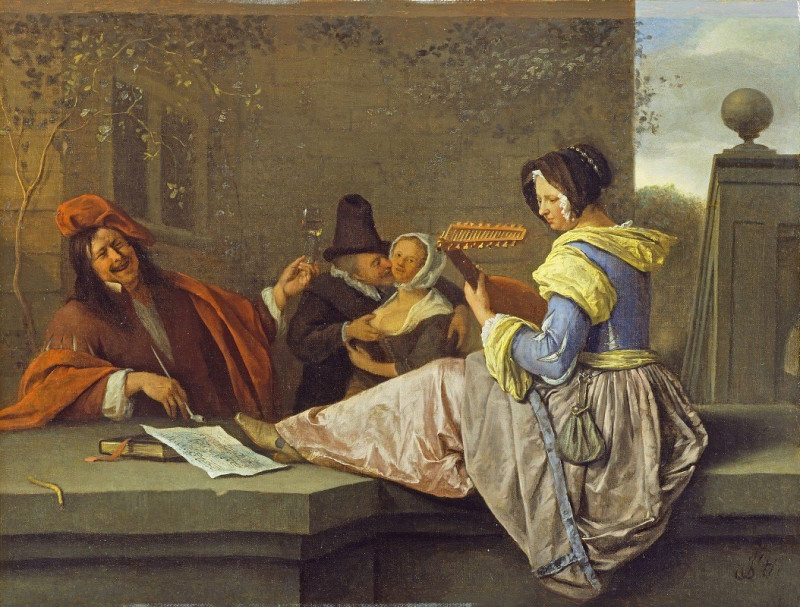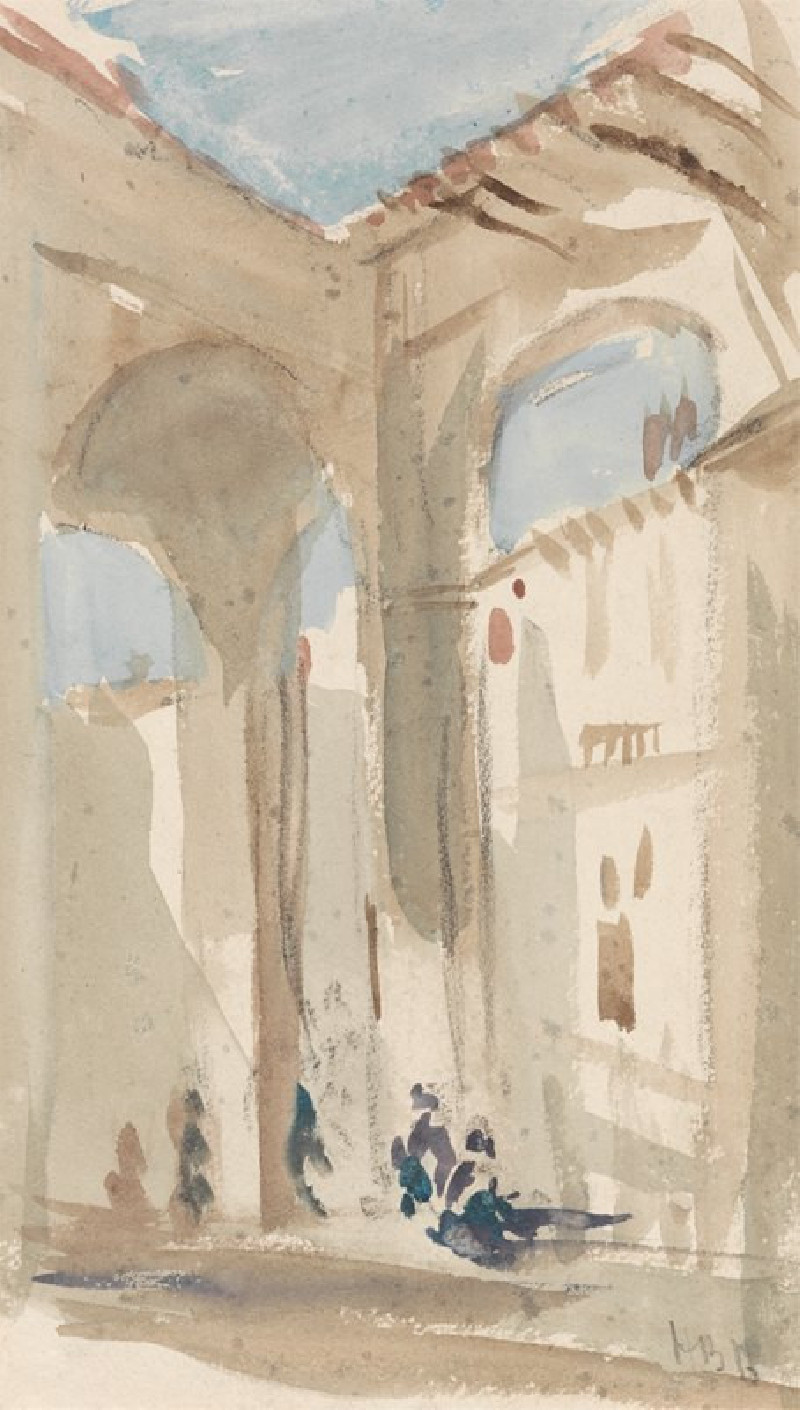Wild Ducklings Illustration From Seitei Kacho Gafu
Technique: Giclée quality print
Recommended by our customers
More about this artwork
This painting by Watanabe Seitei, titled "Wild Ducklings Illustration From Seitei Kacho Gafu," portrays two young ducklings amidst a sparse and delicate depiction of nature. The ducklings are rendered with considerable detail and subtlety, emphasizing their fluffy, speckled feathers. Their poses depict alertness and curiosity, typical of young birds exploring their surroundings.The background is minimalistic, featuring fine lines and light washes of color that sketch out slender twigs and leaves, a few of which bear blossoms. This restrained use of color and line not only centers the focus on the ducklings but also captures the fragile and transient beauty of nature, a theme often explored in traditional Japanese art.Seitei's work is recognized for its elegance and the precise yet seemingly effortless way he portrays birds and flowers, often combining realism with stylistic, almost ornamental expressions of the natural world. This painting is a beautiful example of his skill in using ink and brush to convey both the vitality and the vulnerability of wildlife.

